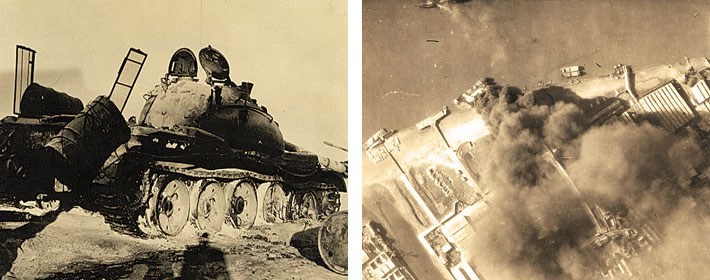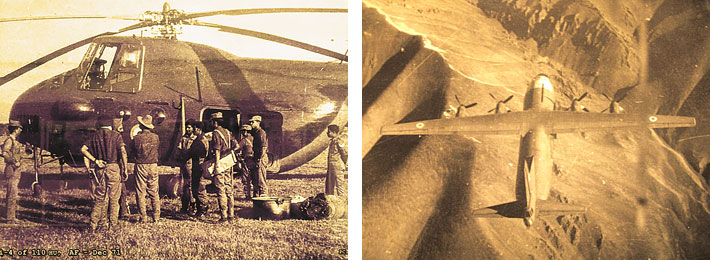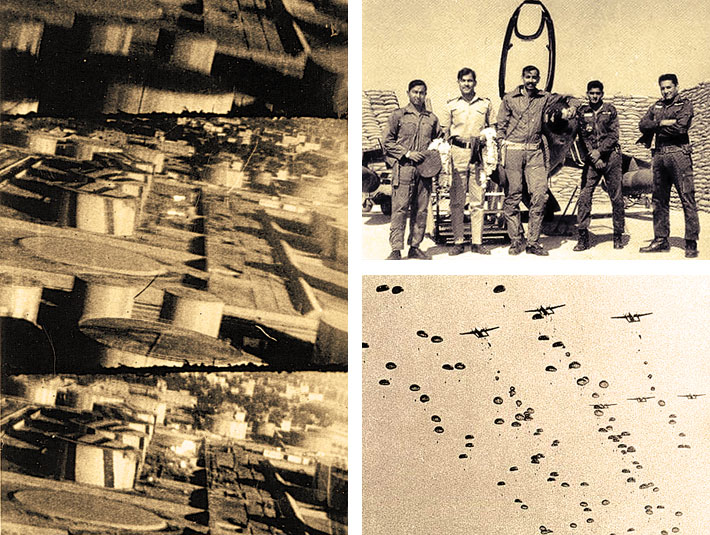INDIAN ARMED FORCES CHIEFS ON OUR RELENTLESS AND FOCUSED PUBLISHING EFFORTS

The insightful articles, inspiring narrations and analytical perspectives presented by the Editorial Team, establish an alluring connect with the reader. My compliments and best wishes to SP Guide Publications.

"Over the past 60 years, the growth of SP Guide Publications has mirrored the rising stature of Indian Navy. Its well-researched and informative magazines on Defence and Aerospace sector have served to shape an educated opinion of our military personnel, policy makers and the public alike. I wish SP's Publication team continued success, fair winds and following seas in all future endeavour!"

Since, its inception in 1964, SP Guide Publications has consistently demonstrated commitment to high-quality journalism in the aerospace and defence sectors, earning a well-deserved reputation as Asia's largest media house in this domain. I wish SP Guide Publications continued success in its pursuit of excellence.
- The layered Air Defence systems that worked superbly, the key element of Operation Sindoor
- Operation Sindoor | Day 2 DGMOs Briefing
- Operation Sindoor: Resolute yet Restrained
- India's Operation Sindoor Sends a Clear Message to Terror and the World – ‘ZERO TOLERANCE’
- Japan and India set forth a defence cooperation consultancy framework, talks on tank and jet engines
IAF’s Role in the War with Pakistan in 1971
For the first time in the history of warfare, an armoured thrust was defeated by air action alone in just two days

An armed conflict between the Bengali nationalists in what was then East Pakistan and the Pakistani armed forces deployed there, became a war of liberation of East Pakistan in 1971 from the domineering West Pakistan that is reported to have massacred around three million Muslims and Hindus. This initially resulted in a flood of Bengali refugees into India and ultimately led to the Bangladesh War of Independence in 1971 in which the Indian armed forces got involved in a big way as it escalated into a full scale war between India and Pakistan. In this war against Pakistan for the liberation of East Pakistan and the creation of Bangladesh that lasted for 14 days, the Indian Air Force (IAF) played a significant role that is recorded in the annals of military history as the Lightening Campaign. The 50th anniversary of the victory will be celebrated a year from now!
WESTERN THEATRE
The Indian armed forces joined the war on December 3, 1971, after Pakistan Air Force (PAF) launched Operation Chengiz Khan which included pre-emptive air strikes in the day time on 11 military targets that included forward air bases and radar installations of the IAF in the Western sector i.e. in Punjab, Jammu and Kashmir and Rajasthan. In retaliation, the IAF went into action at midnight on December 3, 1971 with the aim primarily of knocking the Sabre fighter jets of the PAF out of action. The aerial action was expanded to massive retaliatory air strikes the next morning. At least in the initial stages, the air campaign in the Western sector was limited to striking forward bases of the PAF and providing close air support to the land forces during offensive or defensive operations.
The IAF did not aim at achieving air supremacy over the Pakistan Air Force on the Western front as the primary focus of the IAF was on the Eastern front
One of the most successful air raids by the IAF into West Pakistan was on December 8, 1971, in which Hunter fighter aircraft based at Pathankot, launched a strike on Pakistani air base Murid and destroyed five sabre jets on the ground. However, in the conflict with the PAF in the Western sector, the IAF did not aim at achieving air supremacy over the PAF as the primary focus of the IAF was on the Eastern front. Action on the Western front was largely defensive in nature whereas on the Eastern sector, the IAF had made plans to decimate the PAF deployed in East Pakistan. However, there was one operation by the combat fleet of the IAF in the Western sector which was in the battle of Longewala that has gone down in history as an outstanding achievement. In this operation, a major armoured thrust with 65 battle tanks by the Pakistan Army on December 5, 1971, was blunted by use of air power alone. Six Hunter aircraft operating out of Jaisalmer, destroyed or damaged 52 Pakistani tanks. For the first time in the history warfare, an armoured thrust was defeated by air action alone in two days, a feat that was repeated nearly 30 years later in the first Gulf War.


EASTERN FRONT
Operations by the IAF on the Eastern front against the PAF were controlled by Headquarters of Eastern Air Command located in Shillong which is in a somewhat remote location. In order to facilitate better coordination of operations with the units of the Indian Army as well as amongst the large number of units of the IAF involved in the offensive operations against East Pakistan, an Advanced Headquarters was created at Fort William in Kolkata after due consultation with the top brass of the Eastern Army Command. Also involved in the operations against East Pakistan, were units under the Central Air Command whose Headquarters was located at Bamrauli, Allahabad. Units of the Central Air Command inducted for operations against PAF in East Pakistan, functioned under the direct control of the Advanced Headquarters of Eastern Air Command, Fort William, Kolkata. Units of the Central Air Command deployed in air operations against the PAF in East Pakistan, were temporarily housed in bases under Eastern Air Command for the duration of the campaign.
The first raid by the IAF in East Pakistan was carried out by Hunter aircraft with air defence cover provided by four MiG-21 fighters
On the Eastern front, the PAF was no match against the IAF. The PAF had just one fully operational airbase at Tejgaon near the capital city of Dhaka from where the PAF was operating just one squadron i.e. total of 16 F-86 Sabre combat jets. This was the only air base in East Pakistan that was capable of undertaking sustained air operations. There were a number of satellite airbases, but these lacked the service facilities for sustaining prolonged air operations. The satellite air bases were at Chittagong, Comilla, Jessore, Barisal, Ishwardi, Lalmunirhat, Cox’s Bazar and Shamsher Nagar.
The PAF had temporarily deployed a squadron of Shenyang F-6 fighter aircraft at Kurmitola which is now an international airport and has been renamed as Shahjalal International Airport. However, these aircraft were withdrawn soon after because the base was not adequately developed in respect of infrastructure to support operations by fighter aircraft.


The first raid by the IAF in East Pakistan was carried out by Hunter aircraft with air defence cover provided by four MiG-21 fighters which really was not necessary. The Hunter aircraft were quite capable of air defence as well as it was demonstrated in the first raid itself when the Hunters shot down one Sabre when intercepted before the rendezvous took place. Hunters, MiG-21 and Canberra bombers of the IAF were used extensively to strike PAF air bases to neutralise the airpower of East Pakistan. Apart from the combat fleet that achieved air supremacy from the word go, the transport and helicopter fleets of the IAF also played a crucial role. The transport fleet that participated in the air operations essentially to provide transport support, consisted of three squadrons of the C-47 Dakotas, two squadrons of Antonov An-12, one squadron of C-119 Packet, one squadron of Caribou and one squadron of Otter. Some of these transport squadrons that were under Western and Central Air Commands, were redeployed under Eastern Command and were based at Jorhat, Guwahati, Barrackpur and Dum Dum airfields to provide logistic support to the Indian Army in the offensive operations launched into East Pakistan.
A major operation undertaken jointly between the IAF and the Indian Army was the paradrop of a battalion group over Tangail in East Pakistan on December 11, 1971. Regarded as a landmark event, the objective of the paradrop was to capture the Poongli Bridge on the Jamuna river to cut off the retreating 93 Brigade of the Pakistan Army that was moving back from Mymensingh to reinforce the defences of Dhaka. The paradrop which included paratroopers, artillery, vehicles and other stores was carried out by a fleet of 36 transport aircraft that included the An-12, C-119, Dakotas and Caribou. Feint dummy drops were also carried simultaneously by Caribou aircraft at another location to confuse the Pakistan Army about the real location of the Indian armed forces. The paradrop on December 11 at Tangail behind the enemy lines, was the trump card of the Indian armed forces that dealt a severe blow to the Pakistani forces and ultimately led to the fall of Dhaka.

The rotary-wing fleet of the IAF that consisted largely of the Mi-4 platforms, played an important role by providing logistic support. On December 10, 1971, the helicopter fleet rose to the occasion in support of the No. 4 Corps when one of its Brigades had to be transported across vast stretches of marshy land and across the 12 km-wide Meghna river where there was no bridge available, to get to Dhaka soonest possible. This was made possible by the helicopters of three units of the IAF through “Operation Cactus Lily”.
THE FINAL WORD
In the final tally, the IAF flew 1,978 sorties in the East and about 4,000 in the Western sector against the PAF that flew 30 sorties on the Eastern front and 2,840 on the Western front. More than 80 per cent of sorties flown by IAF aircraft were for battlefield air support and interdiction missions. The IAF lost 45 aircraft as against the PAF’s loss of 75. In a war that was initiated by Pakistan with pre-emptive strikes against air bases and other assets, the IAF performed reasonably well as it gained the initiative rapidly and thereafter dominated the skies on both the Western and Eastern fronts. It was the first time that the IAF experienced a two-front war that is of major concern for the Indian armed forces even today.





